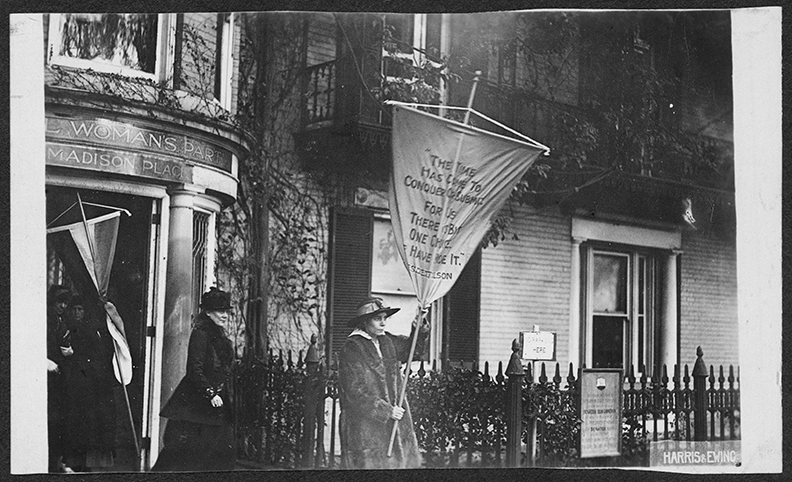Teach This Poem is a weekly series featuring a poem from our online poetry collection, accompanied by interdisciplinary resources and activities designed to help K-12 teachers quickly and easily bring poetry into the classroom.


- Warm-up (quick write): Who is one strong woman that you know? Write a paragraph about what makes this woman powerful. (Teachers, before moving onto the next activity, give students time to share their paragraphs with a partner or elicit 2-3 volunteers to read their paragraphs aloud).
-
Before Reading the Poem (Teachers, divide students into two groups and give each group one of the following two images of Alice Paul with the caption/title hidden: Image 1; Image 2.) In your assigned group, take your time closely observing your image of Alice Paul. Think about: What do you notice first? What might be happening in this image? When do you think that this image was created? Why? (Teachers, reveal the title/caption.) Now, look at the image again and read the caption/title. What do you wonder about Alice Paul or this image? Share with the class.
-
Reading the Poem: Read the poem “Alice Paul” by Katherine Fisher silently. What do you notice about the poem? Annotate for any words or phrases that stand out to you or any questions you might have. (Teachers, if your students need context, this Suffrage exhibit from the Library of Congress might be a helpful tool, as well as this article about Alice Paul.)
-
Listening to the Poem (enlist two volunteers to read the poem aloud): Listen as the poem is read aloud twice, and write down any additional words and phrases that stand out to you. Call back the lines that you like by saying these lines aloud with your group.
-
Small-group Discussion: Share what you noticed in the poem with your partner and another pair of students. Based on the details you just shared with your small group, what connections can you make between the poem and some of the images of Alice Paul you saw earlier? What connections can you make between the poem and the women that you wrote about at the beginning of class?
-
Whole-class Discussion: How would you describe the “young woman” in the poem? Why? How does she compare to the “river of women”? Why might this poet have written this poem?
-
Extension for Grades 7-8: In honor of Women’s History Month, think back to the woman you wrote about at the beginning of class. If possible, conduct an interview with this woman and share your findings with the class. Or, continue researching suffragists and the suffrage movement in the United States. Pick a suffragist and write a brief report about this person’s life and accomplishments. Share with your class. (Teachers, you may wish to assign research groups or pre-select women that your students would enjoy researching.)
-
Extension for Grades 9-12: In honor of Women’s History Month, continue researching suffragists and the suffrage movement in the United States. Pick a suffragist and write a well-researched essay about this person’s life and accomplishments. Or, read more about Modern and Contemporary Women’s Poetry here. Choose a poet and read one of the poet’s books. Share your findings with a classmate in a literature circle. (Teachers, you may wish to assign research groups.)
More Context for Teachers
This year marks the centennial of the 19th Amendment, giving women the right to vote, which became official when ratified by a thirty-sixth state on August 18, 1920. The occasion offers our country an opportunity to celebrate this democratic milestone, to revisit the complexities of the women’s suffrage movement, and to draw attention to the equal rights issues of today. One way to share this history is through poems, as the campaign for women’s voting rights was heralded and promoted by the poems written and published by suffrage activists themselves. Learn more.
